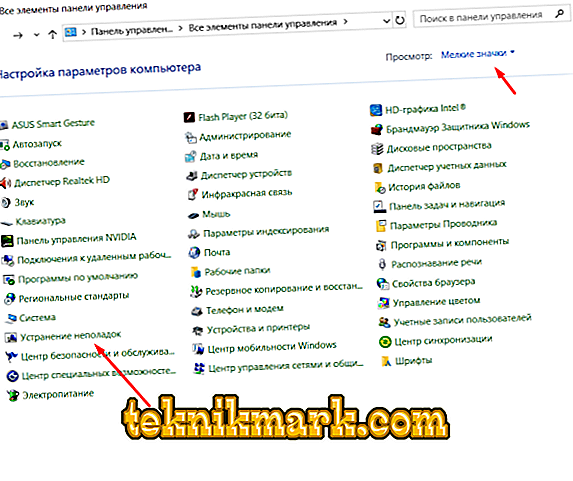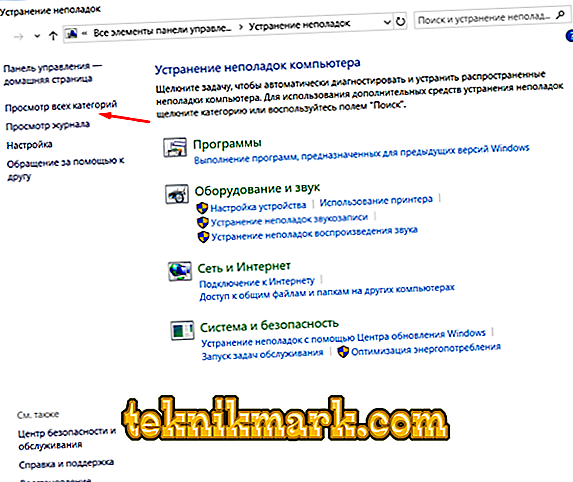Despite the fact that many experienced users consider the need to update the Windows operating system with a greater degree of skepticism and mistrust, it is pointless to deny that in some cases the timely updating of Windows components may be the best means of prevention. With the release of the tenth version of the main Microsoft product, the entire update process became more automated, which significantly eased the “work” of users, but also led to the emergence of a greater number of various errors related directly to downloading and installing system components. Within the framework of this topic, we will discuss the causes of the occurrence and the ways to solve the error called “Failed to configure or complete Windows updates.

Windows update error fix.
Causes and Solutions
So, the error manifests itself in a fairly familiar form (relative to this process) - the user clicked on the “Update and Shut Down” button, waited for 100% of the load, restarted or restarted the computer and saw a message about the failed attempt to complete the update procedure.

Further developments depend on whether the operating system offers to roll back the changes (and successfully complete the rollback) or the computer goes into a cyclic reboot. It is worth noting that even if the computer is constantly restarting, this does not mean that the changes are not rolled back. Sometimes the message "Failed to configure or complete Windows updates" may appear on the third and fifth reboot. Therefore, it is highly recommended not to intervene in this process, even if it takes hours of waiting until it becomes reliably known that the erroneous process is irreversible.
The “causal relationship” in the problem under consideration is quite difficult to define. The fact is that from the occurrence of failures with updating the operating system, no one is insured, no matter how powerful or how weak a computer is. In most cases, the main factor is unstable Internet connection and / or incorrect file downloads. Accordingly, the culprit here, for the most part, will be the company Microsoft itself, but who admits this. That is why the key task in resolving the issue under consideration is to roll back the changes and then restart the download and install all the necessary files.
Decision
As mentioned above, there are several scenarios, from which it is worth repelling, taking concrete steps to restore Windows to work:
- “The operating system does not boot” - a cyclic reboot or a multi-hour freeze at one stage.
As in the solution of any other error associated with the inability to properly boot the OS in order to get to the desktop, you need a bootable media with a Windows image or any LiveCD. Making such a bootable media is easy, but you will need a computer with a working system. It is necessary to create it in any case, since this obligation is dictated by the modern need to always have a working computer at hand. In addition, having this insurance, it works easier and calmer. So, going back to the heart of the matter, after the boot media is inserted into the corresponding port on the motherboard, turn on the computer and do the following:
- Open the “BIOS” and set the above mentioned flash drive / disk as a priority boot option or use the “Boot Menu”.
- Wait until the first installer window appears (where you are prompted to select the language settings) and press the "Shift + F10" key combination.
- The command line console opens, where you need to run the following commands:
- “Diskpart” - activates the utility for working with disk partitions.
- “List Volume” - is required to open a list of available volumes.

The execution of this command is necessary in order to determine which digit is assigned to the system partition of the disk, since the literal value may differ from what is indicated during the regular boot of the system.
- “Exit” - to close the “diskpart” utility.
- “Ren c: \ windows \ SoftwareDistribution SoftwareDistribution.old” to change the extension of the “SoftwareDistribution” directory, which is necessary so that Windows cannot access its contents.

It is necessary to do this, since the problem in question is caused by one or several update files, which by default are placed by the system in this folder. Also, it would not be superfluous to execute the command “sc config wuauserv start = disabled” to temporarily deactivate Windows Update.

After performing the above steps, close the command line console and restart the computer. Download must go correctly in normal mode. If you managed to get to the desktop, you will need to turn on the "Update Center" again, to do this, press "WIN + R" and enter "services.msc", then:
- In the service list, find “wuauserv”.
- Click on it with the right mouse button and open "Properties".
- In the window that opens, in the “Startup type” line, set “Manual”, click “OK” and close the “Services” window.

After completing this step, do not restart the PC, but go to the item below.
- "The desktop is being loaded" - the second, previously announced script has a solution that is a direct continuation of the first.
The key point is to clear the “SoftwareDistribution” folder, which, after executing the above command, has become to some extent imperceptible for Windows. Simply delete the entire folder and restart the computer, and the system will automatically download and create all the components necessary for it to work.
Conclusion
In most cases, the actions described above are sufficient to resolve the situation considered, but if the error persists even after re-downloading files, then perhaps the problems are more serious and are associated not with the files themselves, but with the tools that install them. In order to check whether this is the case, you can use the standard diagnostic tools:
- Open the control panel and select the Large Icons or Small Icons option.
- Find the Troubleshooting section and open it.

- Click on "View all categories."

- And among all the categories presented, find two items:
- "Windows Update".
- "Background Intelligent Transfer Service BITS".
- Perform a scan one by one and follow the recommendations given there.

Diagnostics can take quite a long time, so you should be patient and still give regular utilities to do their work.



